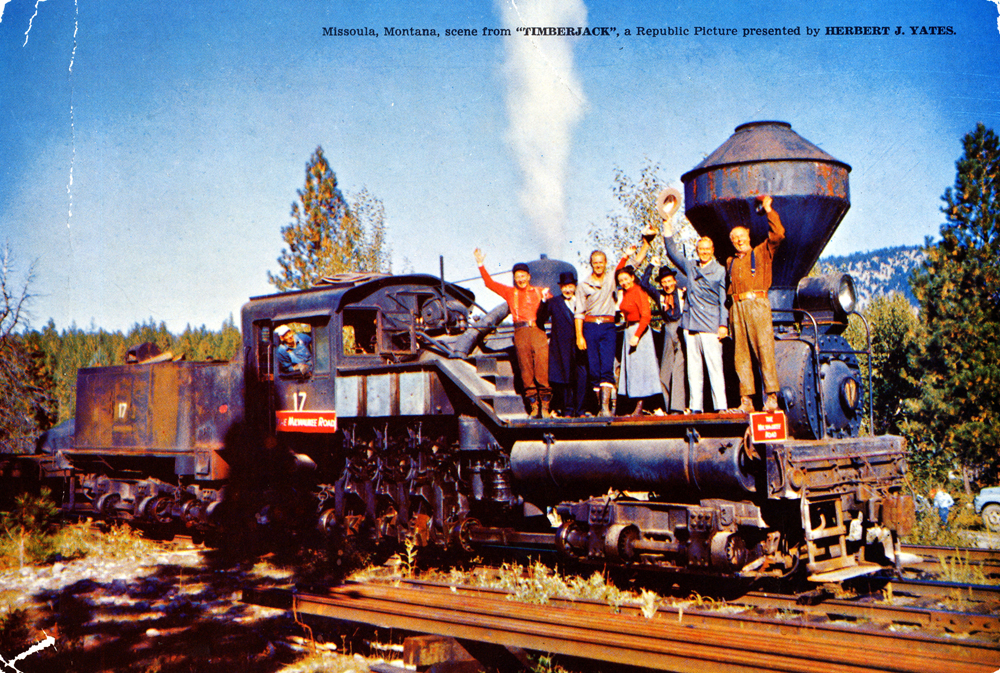
MISSOULA, Mont. — An obscure but classic motion picture about logging in the Northwest, and the unique log-hauling locomotive that starred in it, are returning to the spotlight.
In February 1955, “Timberjack” made its world premiere on the screens of the Roxy and Fox theaters in Missoula, not far from where the movie had been filmed a few months earlier. Seventy years later, Timberjack is scheduled for a celebratory re-screening on Jan. 19, 2025, in the Bonner School Gym east of Missoula, across the road from a lumber mill that provided the backdrop for several of the movie’s scenes.
That same mill is where a Shay-style steam locomotive sat unused for several years before being fired up again to appear in Timberjack. Built in 1923 by the Willamette Iron and Steel Works in Portland, Ore., as Western Lumber Company No.3, this three-trucked “Willamette” or “Willie” looked for all intents and purposes like a Shay, but with a number of modifications. (The Ohio-based Lima Locomotive Works’ patents for such side-geared locomotives had already expired.) Even among its Willamette-built brethren, No.3 was a rarity, being a coal-burner whereas other Willies were fueled by oil. Western Lumber was sold in 1928 to the Anaconda Co. — part of the Anaconda Copper Mining empire — which transformed WL No. 3 into Anaconda No. 7.
The Willie spent most of its active years on logging railroads west and east of Missoula. But in the late 1940s, trucks took over, Anaconda quit hauling logs by rail, and No. 7 found itself confined to mill property in Bonner, where it entered retirement in 1948. Six years later, No. 7 was dusted off, prepped, watered, and fueled for an action-packed role in the Republic Pictures logging Western “Timberjack.”
The movie’s storyline is typical of the Western genre. It pits hero against villain, who compete not only for land and other fortunes but also for the affections of a woman at the local saloon. But for every shootout or fist fight there are plenty of action scenes involving log trains and handcars. Lead actor Sterling Hayden appeared in more than 50 motion pictures, many of them Westerns, including the railroad-themed “Denver & Rio Grande” (1952) and “Kansas Pacific” (1953). He is possibly best remembered for his brief, stunning, and hilarious performance as Brigadier General Jack Ripper in 1964’s Cold War spoof “Dr. Strangelove.”
Among train enthusiasts and historians, it’s old Anaconda No. 7 that steals the show in “Timberjack.” Sharp-eyed viewers will spot it running as No. 7 in some scenes, and No. 17 in others. The movie provides a rare opportunity to see — in color — a Willamette side-gear steam locomotive in action in the 1950s, not long after its official retirement. “Timberjack” shows No. 7 performing at the mills and Northern Pacific depot in Bonner, Mont., and also on sections of the Milwaukee Road’s 40-mile-long Big Blackfoot Branch east of Bonner. This scenic line along the Blackfoot River was begun by the Anaconda Co. in 1904, later sold to and expanded by the Milwaukee Road, and then abandoned in 1980.
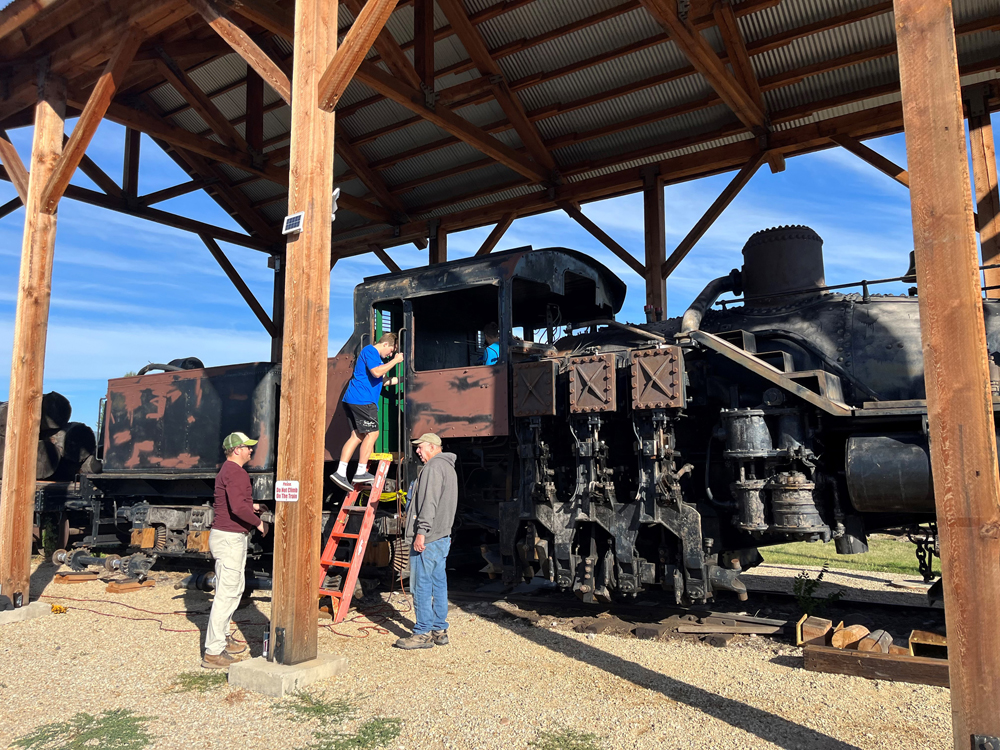
No.7 was donated in the 1980s for preservation and static display at the Historical Museum of Fort Missoula. In 2019, after months of inspection, cleaning, repair, and lubrication of vital components, a compressed air test proved that No. 7’s cylinders, crank shafts, and drive gears are operable. During the past four years, a roof has been built to protect No. 7 from the elements, and restoration efforts have broadened from cosmetic to mechanical. The Museum plans to operate No.7 using compressed air sometime during 2025, allowing it to move on nearly 800 feet of track that it shares with six other pieces of rolling stock. A boiler specialist will address the potential for the Willamette to eventually operate under steam.
“The restoration of No. 7 is one of the most exciting ongoing projects for the Museum,” says Austin Haney, education assistant at Fort Missoula. “It represents an interesting and unique part of our history as a center of the timber industry, as well as Montana’s place in pop culture through the film industry. As one of our most popular and loved artifacts, it’s important to have the continued opportunity to share No. 7 and its fun story with future generations of locals, movie lovers, and train enthusiasts alike.”






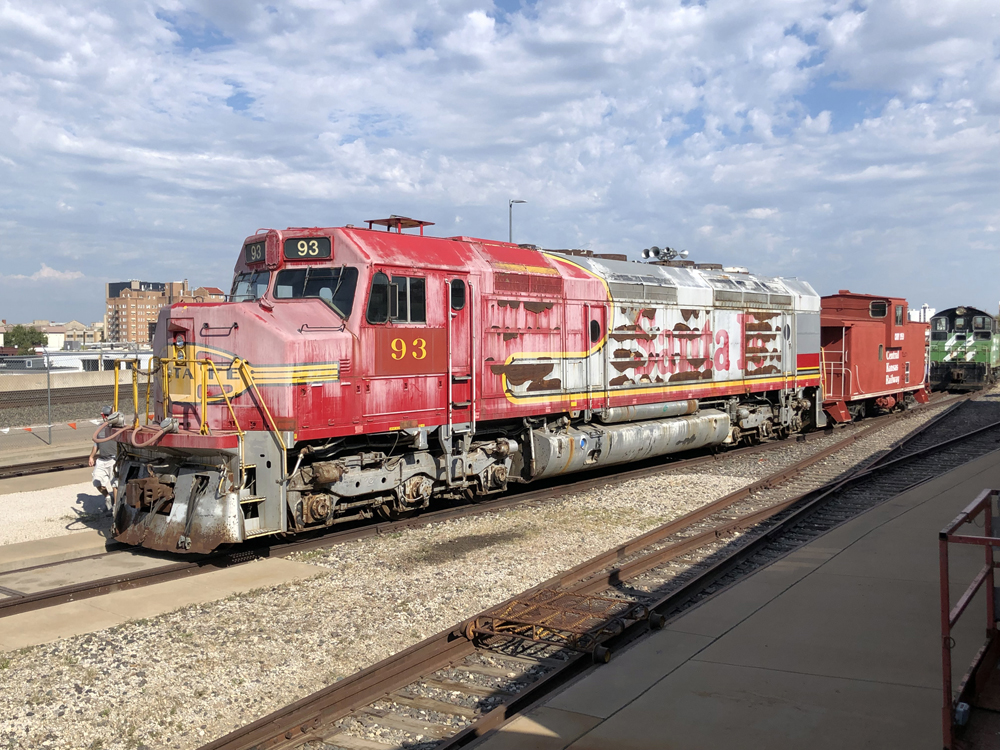
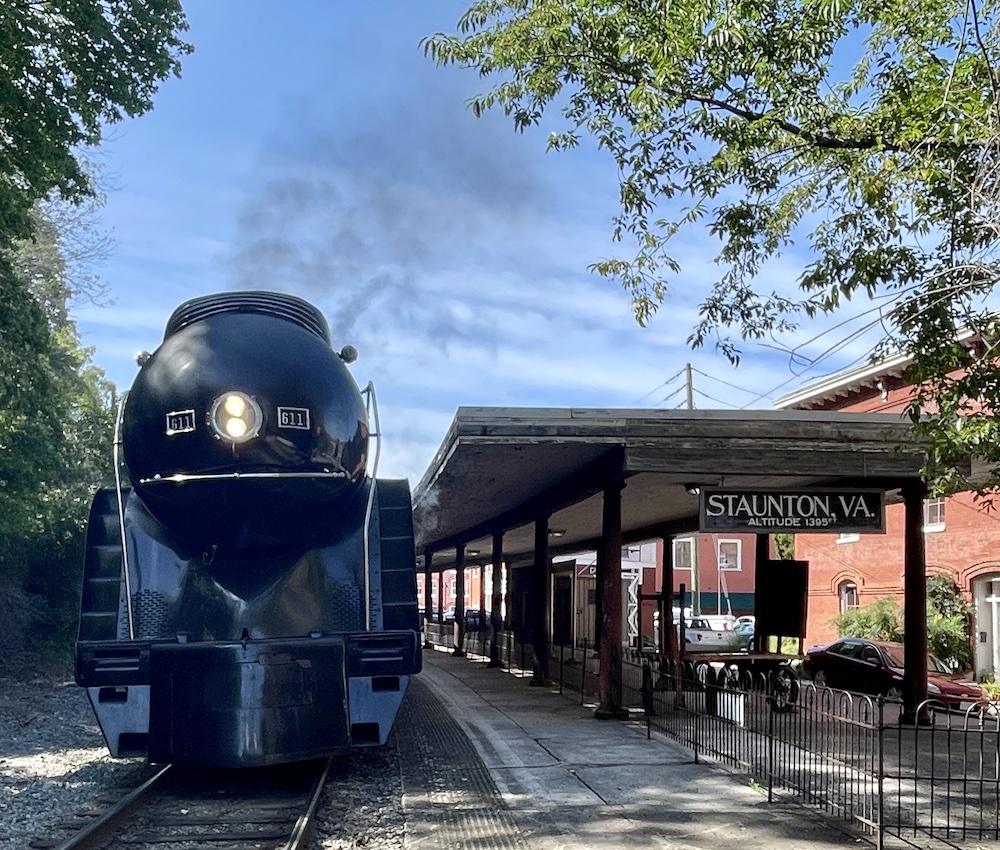
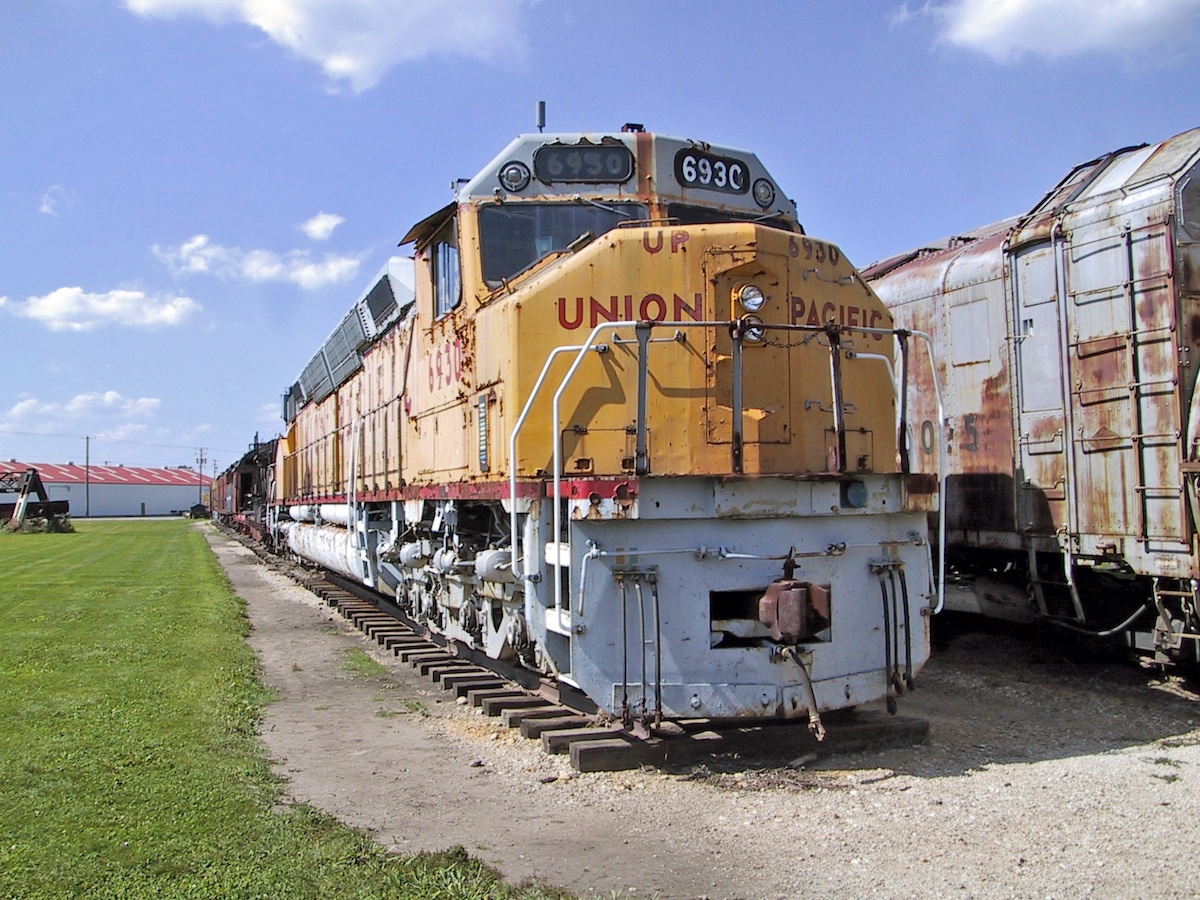
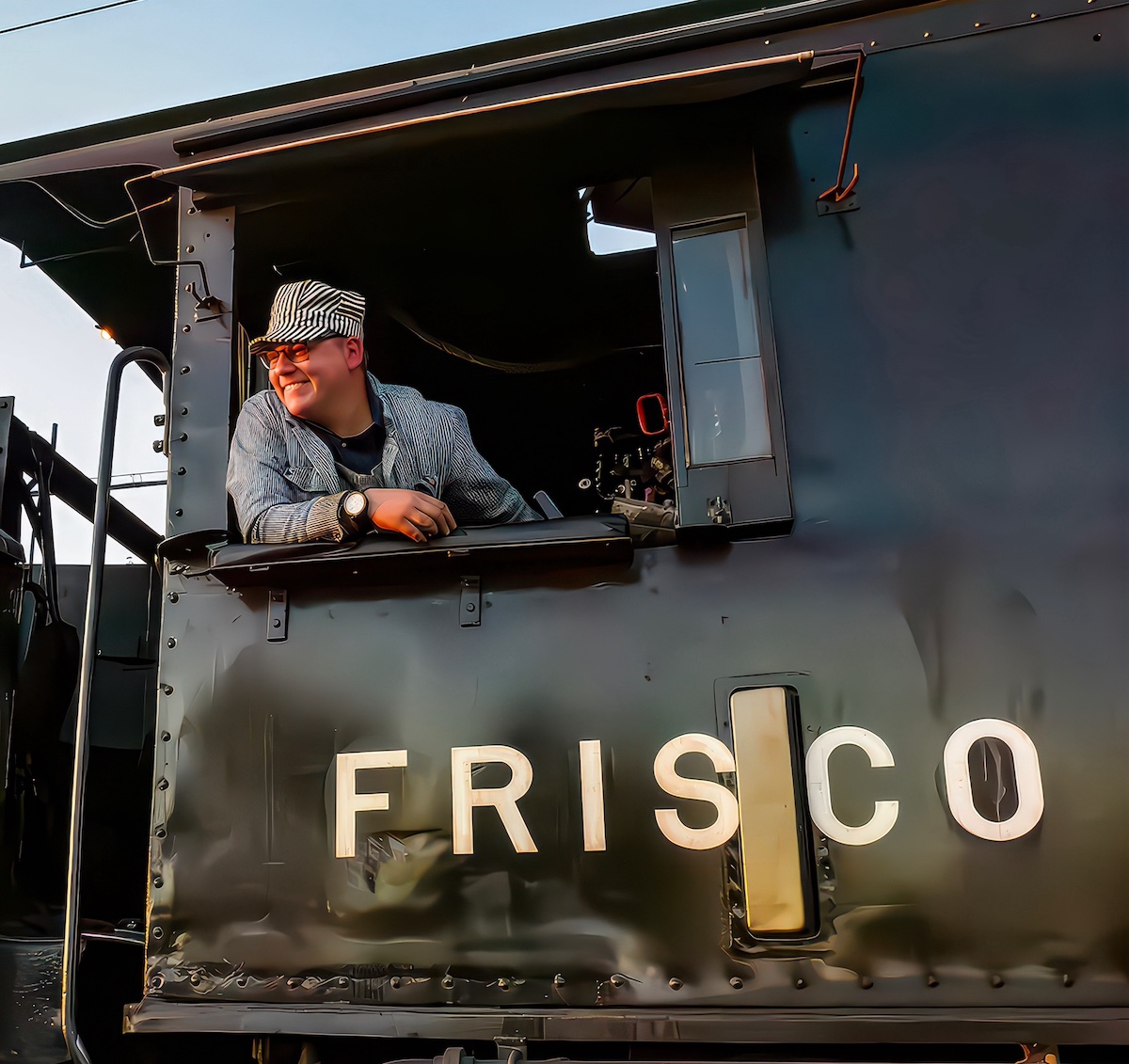
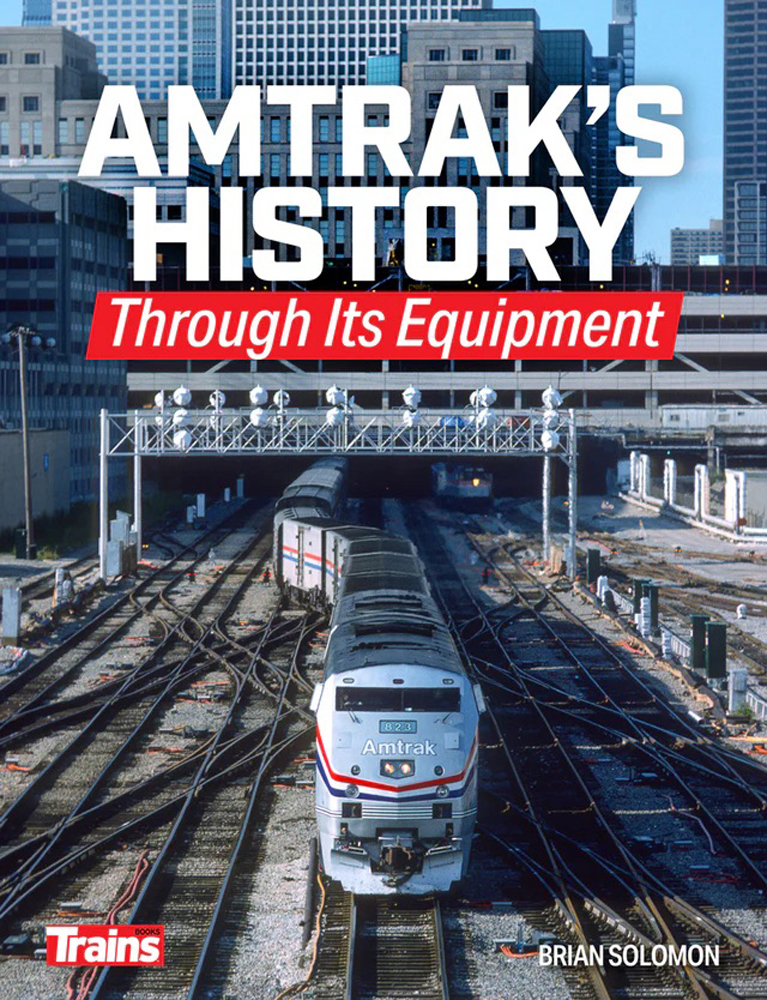
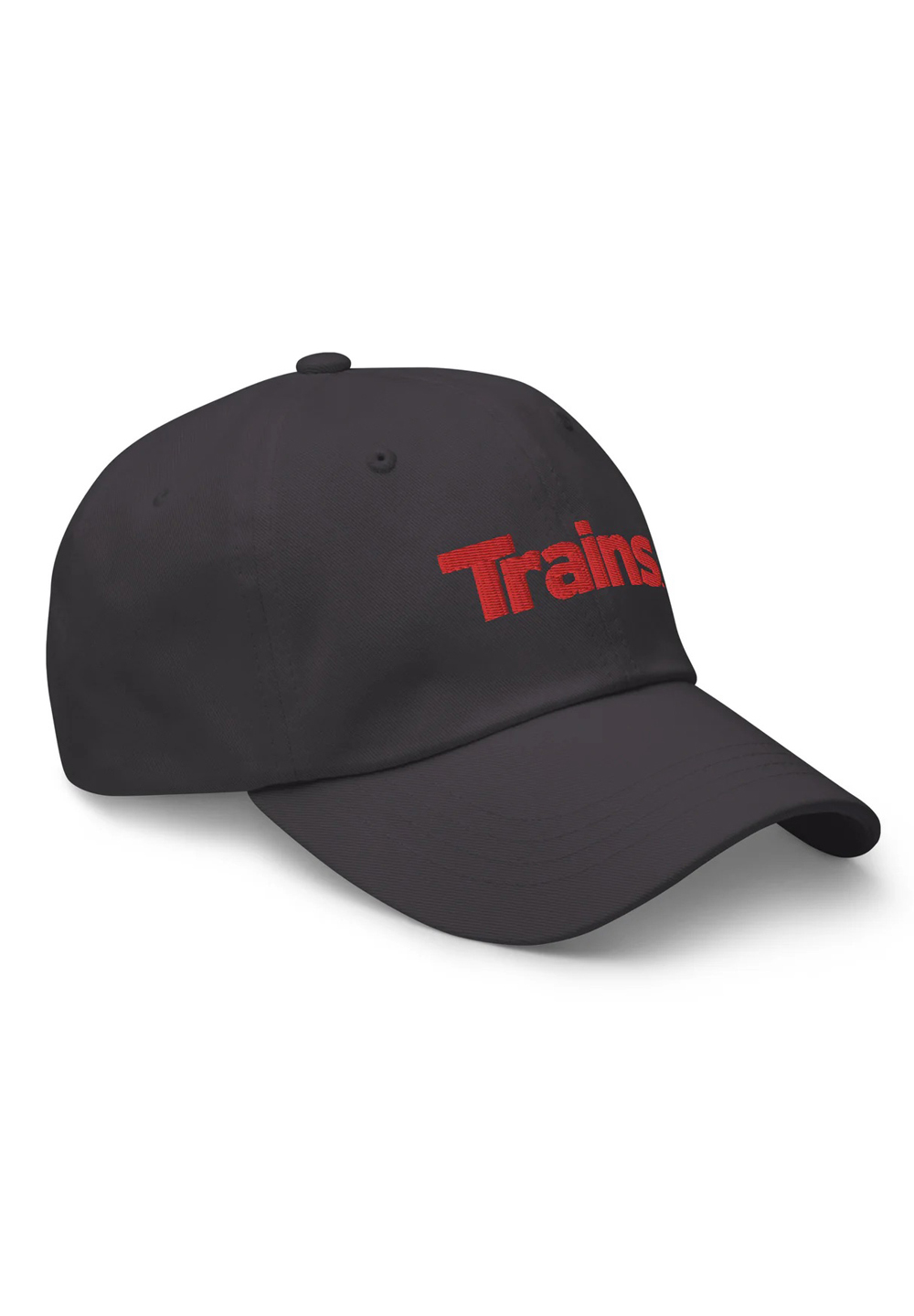
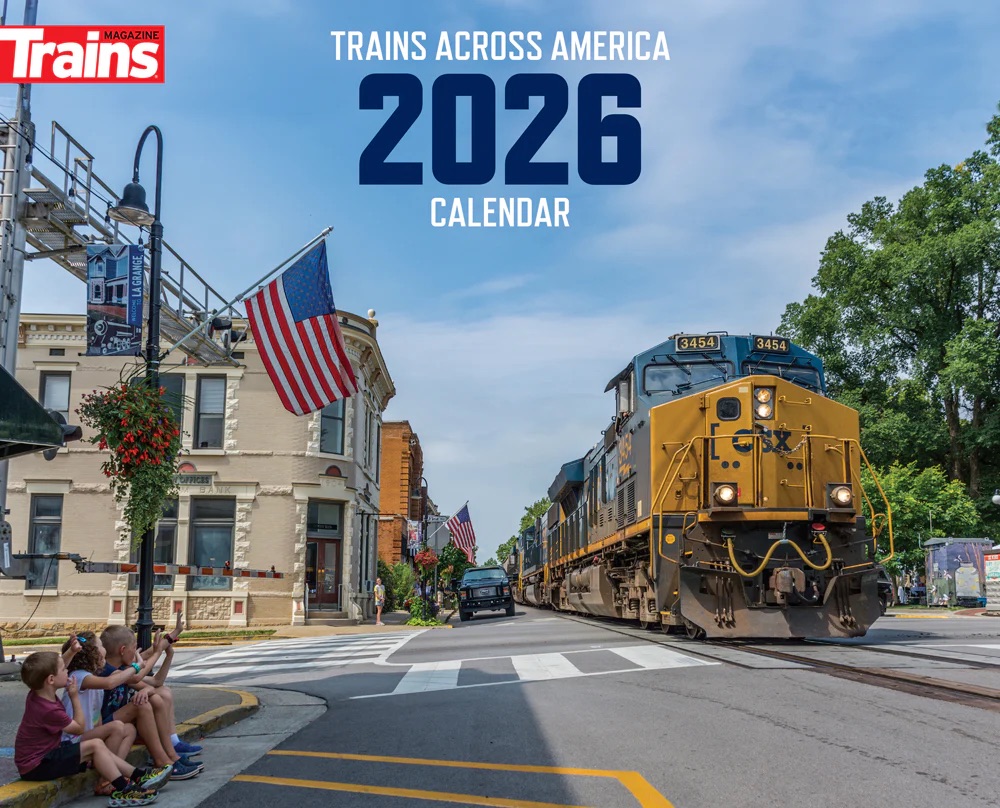
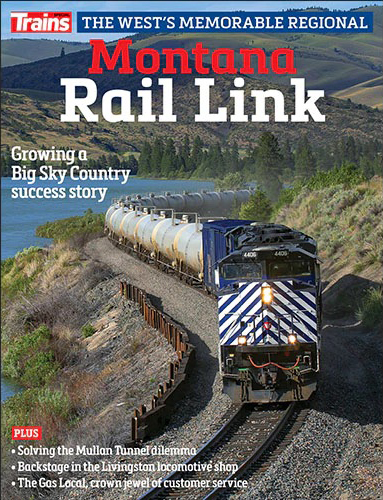
Jeffery: Did that trunk line have any repeaters?
Hello Alan, yes, E-L Rwy used Lynch Type B37 San Francisco based telephony carriers which provided “4 wire” operation on a single pair of #6 AWG open wire, with upper sideband east and lower sideband west, (or vice versa). These repeaters were usually located in cities along the RoW such as Binghamton, NY, and required weekly line-up procedures.
In my last years there, the division engineer dictated that the signal dept CTC operation would piggy back on our LD6 carrier line using pole mounted separation filters. This complicated matters because signal accused telecom of lossy unreliable operations, which proved actually to be the result of somewhat tainted AAR surge arrestors line wire carbons in signal’s dept.’s line side signal case cabinets. They did not run a clean balanced line like we did, relying much on single coductors and an old and noisy CTC wire pair. I would spend a day testing from Binghamton or Susquehanna while the signal forman would work his way from west to east, helping him replace dirty carbons with a central office resistance readings, to help verify cleaning up his act. I don’t recall, however, as to how adversely telecom LD6 was affected because of those separation filters, it’s been a long while, like 45 years.
Back there most of my telecom activities were focused outdoors with pole line maintenance, hot box detectors, wayside disp. telephones some with magnetos in yards, and VHF radio and hot-box line wire tie-in repairs. It wasn’t until after1982 that I got hired by SPRR by the El Paso asst supt. in 1984, that I converted to much more indoor FCC license activities as a radio field tech, (as opposed to a bench tech), with a transcontinental analog 600 channel multiplexed MW district (SF with Oregon to Houston and the Cotton Belt), with also VHF and UHF radio operations with all it’s subscriber tie-in applications, a far cry from what I was exposed to with E-L Rwy telecom carrier.
However I did enjoy working much in the outdoors with E-L Rwy, with a lot of pole climbing “exercise”, as opposed to much indoor work at SPRR mainline and brachline MW, VHF, and UHF radio sites, where I got a bit over weight. lol! But SPRR, and ultimately UPRR, provided me with much modern test equipment experience. Those last 26 years of my 42 year RR tenure was probably the best railroad job of my life, without any threat to furloughs due to reduction of forces like I experienced back east.
Alan, here is some historical info on B37 Lynch linewire carriers. https://www.telephonecollectors.info/doc//steve-c/OCR_Done/Lynch%20Type%20B37%20Carrier%20Telephone%20System%20-%2012-15-58%20tci-ocr.pdf
Oops, I forgot to include above, the Oskosh Tool Co. website link: https://www.oshkoshtools.com/
Reading of Anaconda reminds me that they were one of two uninsulated solid copper wire suppliers for E-L Rwy’s (and many other RRs) open wire telecom pole line operations. The signal depts. usually used the insulated version open wire, with #10 AWG solid wire and other sizes. The open wire we (telecom) used was pure copper in solid #9 AWG, and solid #6 AWG, sold in 1000′ coils. The #6AWG solid copper wire was used for a low loss, long distance telephone trunk line (#LD6 IIRC) from Hoboken, NJ to Columbus, Ohio. And when the scrap copper market got hot, with thieves stealing those wires, we would replace pure solid copper wire with #8 AWG uninsulated solid, copperclad over steal wire, which thieves would quickly reject.
In earlier years, those wires were twist spliced with early Western Union type handsplicing or later on with or without double barrel twist sleeves using two specialized tools for that purpose. In later years, those twist sleeves became troublesome, as they would become loose and/or corroded causing noisy imbalanced phone circuits on the 600 ohm balanced wire pairs, and sometime even acting as a diode detector receiving pesky local low level AM radio stations on the users telephone(s), and were then replaced ASAP by the Nico-Press Co.s’ crimped copper splicing sleeves using their proprietary crimp tools. The Oskosh Tool Co. was yet another traditional supplier of open wire pole-line tools, as well as timber jack tools, and both are still in business today (online). I’ll bet that the Timberjacks movie shows a lot of Oshkosh’s vintage pole and timber tools. I sometimes had to dig a 4′ deep pole hole using Oskkosh’s 8′ long spoon and shovel sets and a vertical steel digging bar pick.
I thought I had seen the 1955 Timberjacks movie on the GRIT, free OTA (antenna), HDTV channel, but I now realize that I confused it with the 1940s Lumberjack movie, which started off with a steam engine pulling a gondola full of drunken singing lumberjacks being transported to the job site. lol I’ll keep my eyes open for the prior movie, as it’s also available on line as a U-tube video.
And I never knew that Shay locomotives were replicated by another company; I learn something new here everyday on the Newswire Forum. 🙂
Jeffrey,
If you haven’t already, you should write a book about your career. I enjoy reading your posts here so I know I would read your book. I read several hours a day anyway and I love to read. If you haven’t already written a book I would love to know what it is so I can find it.
Chris Woodruff
Hello Chis Woodruff, thanks very much for you complimentary reply, however I already spend too much time on 3 website (and forums), Trains, Mercola.com and other natural health websites, and LewRockwell.com political forum(s). Any discretionary time I have is spent outdoors, weather permitting as I’m 79 Y.O, where I, and my late wife once bred Spanish Colonial (original NON-BLM mustangs) pedigreed horses in behalf of the Spanish Mustang Registry in Oshoto, WY. Now without anymore livestock, my interest is in preparing for organic veggie growing via biodynamic and/or regenerative gardening, as I have plenty forest organic waste available for fertile mulch.
Writing a railroad, or any other book would be much too time consuming, and all this sitting indoors can lead to sedentary related health issues. Perhaps when I get as old as Charles, (he just admitted he’s 98 Y.O.), I’ll spend more time with indoor activities. Again, thanks. 🙂